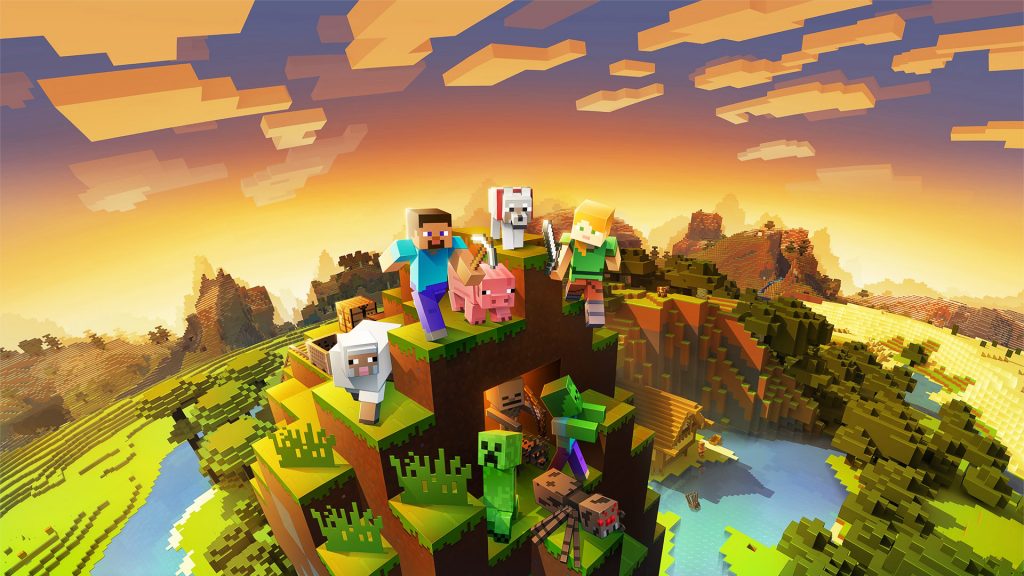In the expansive and ever-evolving universe of Minecraft, acronyms and jargon proliferate. One of the most common, and sometimes confounding, terms is “SMP.” This seemingly innocuous abbreviation unlocks a gateway to a specific, and often highly engaging, style of gameplay. So, what does SMP stand for in Minecraft, and what can players expect from participating in such a server environment? Prepare for a deep dive into the heart of Minecraft’s multiplayer community.
SMP, in its simplest form, stands for Survival Multiplayer. This nomenclature immediately hints at the core experience: survival gameplay shared among multiple individuals. This distinguishes it from single-player mode and other multiplayer variations like mini-game servers or creative-focused builds. However, the devil, as they say, is in the details.
The essence of an SMP server lies in its cooperative and competitive dynamics. Players are thrust into a procedurally generated world, tasked with gathering resources, constructing shelters, and fending off the myriad hostile entities that emerge during the night cycle. The collaborative aspect arises from the necessity of mutual support. Sharing resources, pooling labor for monumental builds, and forming alliances against common threats become vital strategies. Conversely, the competitive edge emerges as players vie for dominance, rare resources, or simply bragging rights within the server community.
But what specific types of content can one expect to encounter on an SMP server? The possibilities are virtually limitless, but certain recurring themes and gameplay styles tend to dominate.
1. Collaborative Builds and Infrastructure Projects: One of the most visually striking aspects of many SMP servers is the emergence of elaborate structures and interconnected infrastructure. Players often pool their resources and expertise to construct sprawling cities, intricate transportation networks (utilizing minecarts or even more advanced redstone contraptions), and monumental landmarks that serve as testament to their collective efforts. These collaborative projects foster a sense of community and shared accomplishment.
2. Economic Systems and Trading: As players accumulate resources, they often establish rudimentary, or even sophisticated, economic systems. These systems can range from simple bartering arrangements to complex currencies based on rare items or in-game achievements. Designated trading districts often spring up, where players can buy and sell goods, negotiate prices, and engage in the mercantile aspects of survival. A vibrant economy adds a layer of strategic depth to the gameplay, encouraging players to specialize in specific resource gathering or crafting activities.
3. PvP (Player versus Player) Combat and Faction Warfare: The inherent competitive nature of SMP often manifests in the form of PvP combat. This can range from friendly duels in designated arenas to large-scale faction wars for control of territory or resources. Some SMP servers implement sophisticated rulesets and plugins to govern PvP interactions, ensuring fair play and preventing griefing. Others adopt a more laissez-faire approach, allowing for unbridled conflict and emergent power dynamics.
4. Questing and Roleplaying Elements: While the core gameplay of SMP revolves around survival and competition, many servers incorporate elements of questing and roleplaying to enrich the experience. This can involve the creation of custom storylines, the implementation of NPC (Non-Player Character) characters with specific tasks or dialogues, and the development of in-game lore that shapes the server’s history and culture. Players may adopt specific roles or personas, further immersing themselves in the server’s narrative.
5. Redstone Engineering and Automation: For players with a penchant for technical challenges, SMP servers provide ample opportunities to explore the intricacies of redstone engineering. Redstone, a versatile in-game material, allows players to create complex circuits and automated systems. These systems can range from simple traps and security measures to elaborate mining contraptions and automated farms. The collaborative nature of SMP encourages players to share their redstone creations and collectively improve the efficiency of the server’s infrastructure.
6. Community Events and Challenges: To foster a sense of community and engagement, many SMP servers host regular events and challenges. These can include building competitions, parkour courses, mob arena battles, or even server-wide treasure hunts. These events provide opportunities for players to showcase their skills, compete for prizes, and interact with other members of the community in a relaxed and enjoyable setting.
7. Emergent Storytelling and Server Lore: Perhaps the most fascinating aspect of SMP servers is the potential for emergent storytelling. As players interact, form alliances, betray each other, and shape the server’s landscape, a unique and often unpredictable narrative unfolds. Server administrators and dedicated players may document these events, creating a rich tapestry of lore that evolves over time. This emergent storytelling adds a layer of depth and meaning to the gameplay, transforming the server into a living, breathing world with its own history and culture.
Ultimately, the content one encounters on an SMP server is largely determined by the server’s rules, the community’s preferences, and the server administrator’s vision. However, the underlying principles of survival, collaboration, and competition remain constant. Whether you are a seasoned Minecraft veteran or a relative newcomer, exploring the world of SMP servers offers a unique and rewarding gameplay experience. It is a testament to the enduring appeal of Minecraft’s sandbox nature and the power of collective creativity.







Leave a Comment